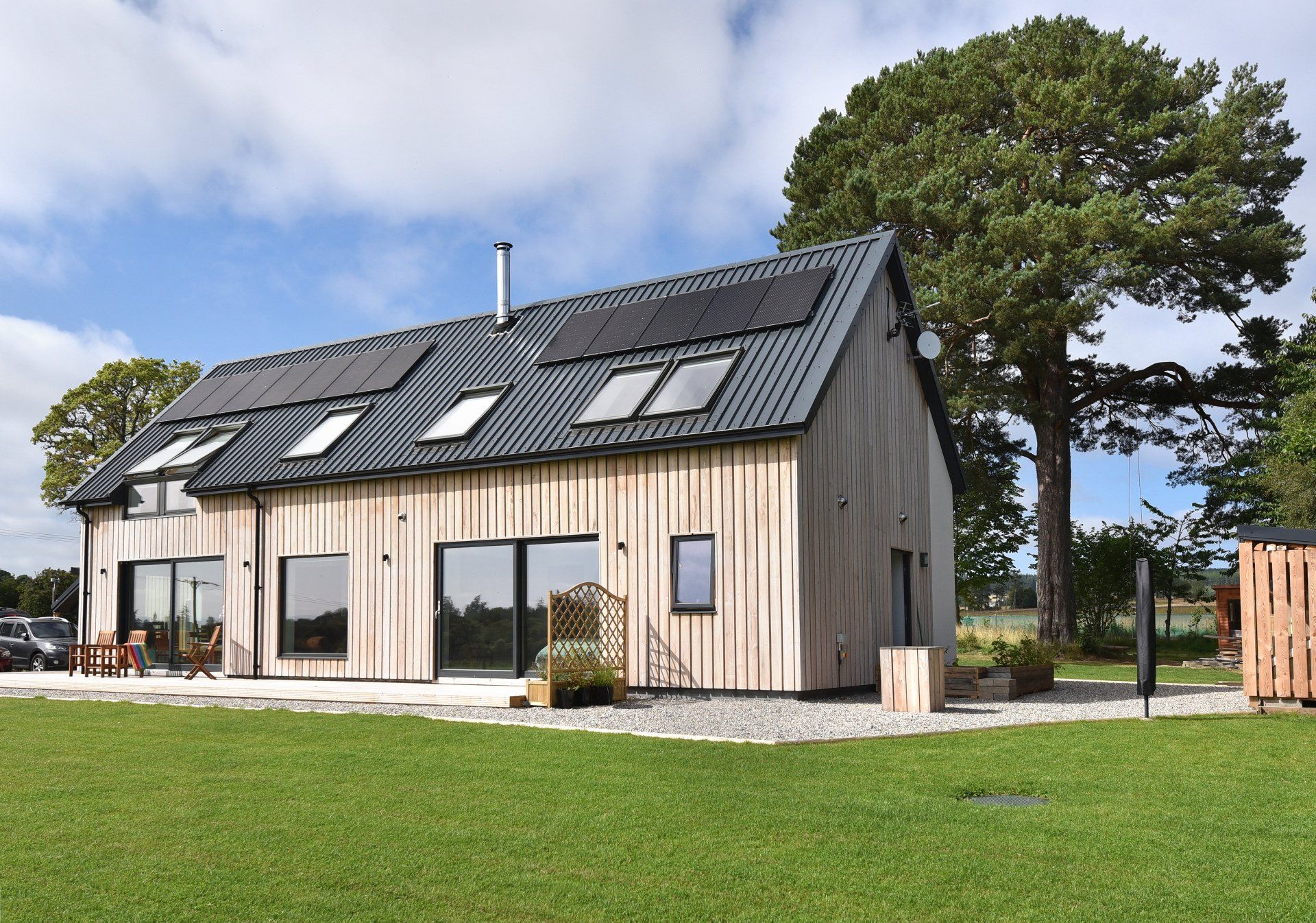FAQs
Are you considering using SIPs on your projects, but you have some questions? We’ve put together some FAQs below:
-
What are SIPs?
Structural Insulated Panels (SIPs) are a composite panel that can be utilised for wall and roof structures and are known as a Modern Method of Construction (MMC).
SIPs are a “Fabric-First” approach, easily integrated with a wide range of construction materials as a load or non-load bearing structure, which provide a built up - through wall panel system.
SIPs are framing, insulation, and sheathing in one pre-fabricated component.
-
What is the build-up of a SIPs panel?
Generally SIPs are made with Oriented Strand Board (OSB) faces; however, they can also be manufactured using other sheet materials such as Plywood and Cement Particle Board (CPB).
SIPs can be manufactured with different cores including: Expanded Polystyrene (EPS), Graphite Infused Polystyrene (Neopor EPS), Polyurethane (PUR) or Polyisocyanurate (PIR).
Hemsec SIPs are manufactured utilising an injected closed cell Polyurethane - rigid foam system, sandwiched between two structurally rated skins of Orientated Strand Board (OSB/3) that can provide continuous structural integrity and superior insulation within one component.
Hemsec SIPs product ranges include: Residential (Available with 11mm or 15mm OSB) and Commercial (15mm OSB).
-
What is a U-value?
U-value is the measurement of heat flow through any given combination of materials, air layers and air spaces. The lower the U-value, the more slowly the transfer of heat in and out of a building and the better the insulating quality.
-
What type of build can SIPs be used for?
SIPs can be utilised in virtually any construction project (residential, leisure, commercial, education, retail), as structural envelopes or in-fill panels within a steel, concrete or timber frame.
-
Why choose SIPs over traditional methods?
The main benefits to building with SIPs are:
• Superior Insulation provides improved energy efficiency which reduces heating and cooling costs.
• Installation time can be reduced up to 60% against traditional construction therefore minimising overall onsite
costs due to reduced; project management, plant hire, welfare facilities and most importantly labour.
• Factory-controlled manufacturing provides a consistent and accurate engineered product allowing for easier and
precise installation.
• Offsite manufacture results in less waste on site.
• Panels can be built in to large format walls prior to site delivery therefore reducing installation time.
• Up to 7 times stronger when compared to timber frame construction.
-
What foundation should be used for a SIPs house?
Any foundation method can be used with SIPs; however, the tolerance level should be no more than +/- 5mm to allow for easy installation.
-
Would a SIPs construction be more expensive?
The initial, up-front cost of a SIP build over traditional methods i.e. timber frame or brick and block, is typically higher depending on the complexity of the design. However the savings in construction time, reduction of material waste onsite and improved energy efficiency of the building will bring significant savings, making a SIPs construction a long-term cost effective solution.
-
What are the options for external finishes?
External finishes are numerous and come down to personal preference, you can have traditional cavity and brick or stone wall, render, brick slips, timber cladding, slate, copper, zinc, stainless standing seam, etc.
-
What is the durability of SIPs
A building constructed with SIP panels will have durability comparable to other forms of construction. If the design of the structure follows best practice and the building is maintained and weather tight, a life of at least 60 years can be
expected.
-
What are the thermal, fire, acoustic and structural details of a SIP?
Full technical details of Hemsec's SIPs can be found on our quality and testing page here.
-
What certifications do I need to consider for SIPs?
When building with SIPs it is important to ensure they are high-quality. BBA Certified products are extensively tested for Structural, Acoustic and Thermal properties, including Fire Resistance which are important factors when selecting a material for your build. Many homeowners find that they cannot secure a mortgage on a SIP that doesn’t have a BBA certificate.
What are the benefits of building with SIPs?
Thermally-efficient
Strong and versatile
Faster build times
Maximises internal space
ARE YOU READY TO TALK?
HEMSEC MANUFACTURING LTD.
Rainhill Factory
Stoney Lane, Rainhill, Prescot, Merseyside.
L35 9LL
Huyton Factory
Huyton Business Park,
Stretton Way, Liverpool
L36 6JF
CONTACT US
Tel: 0151 426 7171
Email: contact@hemsec.com
QUICK LINKS
JOIN OUR MAILING LIST
Mailing list form
We will get back to you as soon as possible.
Please try again later.

















